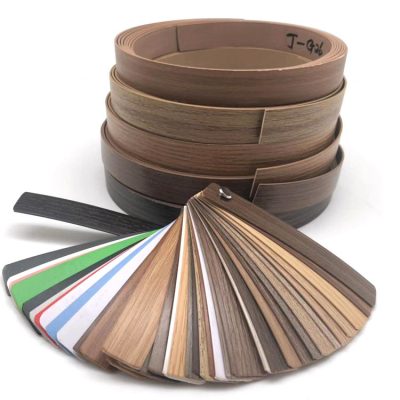Edge banding materials like wood, veneer, and some types of PVC can be stained to match the color and appearance of the substrate or to achieve a desired finish. However, not all edge banding materials are suitable for staining, and the process may require some preparation and techniques to achieve the desired results. Here’s a breakdown:
- Wood Edge Banding: Wood edge banding, often made from the same wood species as the substrate, is an excellent candidate for staining. It can be stained using standard wood stains to match the appearance of the surrounding wood. The process typically involves the following steps:
- Sand the wood edge banding to ensure a smooth and uniform surface.
- Apply a wood conditioner to help the wood absorb the stain evenly (optional).
- Apply the wood stain, following the manufacturer’s instructions, and wipe off any excess.
- Allow the stain to dry completely.
- Apply a clear finish or topcoat to protect the stained wood and provide the desired sheen.
- Veneer Edge Banding: Veneer edge banding, which is made from real wood veneer, can also be stained in a similar manner as wood edge banding. However, since veneer is very thin, care must be taken to avoid sanding through the veneer layer during preparation.
- Some Types of PVC Edge Banding: While traditional PVC edge banding is not typically stainable due to its non-porous nature, some specialty PVC products are designed to be stainable. These stainable PVC edge bandings are manufactured with a textured surface that can accept stain to mimic the look of wood grain. When using stainable PVC edge banding:
- Ensure that the surface is clean and free of contaminants before applying the stain.
- Apply the stain evenly, following the manufacturer’s instructions.
- Wipe off any excess stain.
- Allow the stain to dry thoroughly.

It’s important to note that not all edge banding materials, especially those made from synthetic materials like ABS or melamine, are suitable for staining. These materials are typically non-porous and do not absorb stains well.
Before attempting to stain any edge banding material, it’s advisable to test the staining process on a small, inconspicuous piece to ensure that you achieve the desired color and appearance. Additionally, follow the specific staining instructions provided by the manufacturer of the edge banding material and the stain product to achieve the best results.
